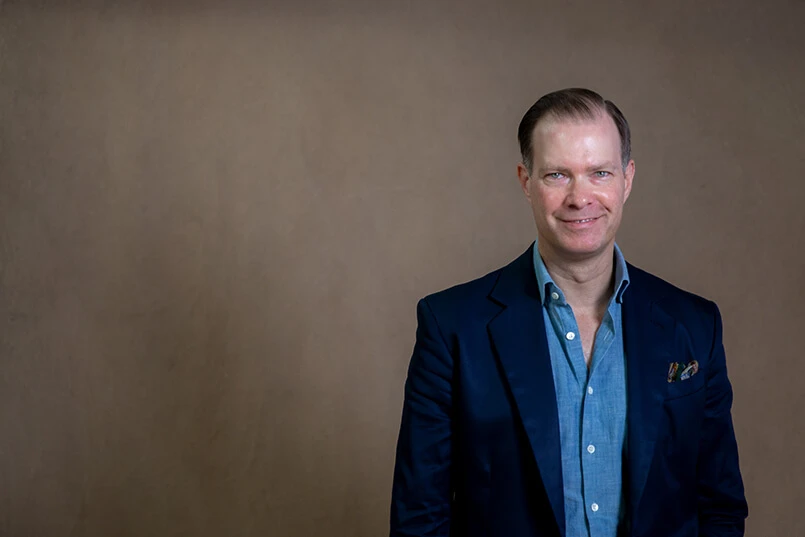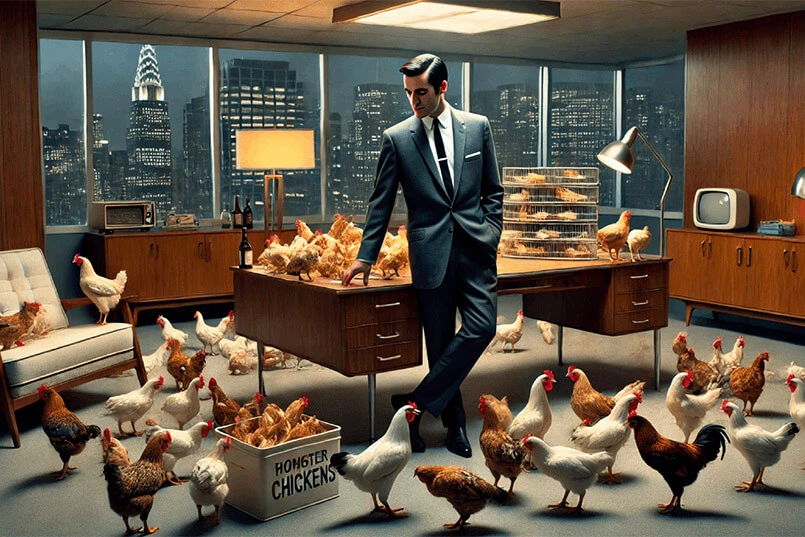TrinityP3 was invited by AdForum to attend a series of webinars in July 2020 in which each of the major agency networks was invited to sell the benefits of their distinctive approach to the business. The audience for each webinar was a hard-bitten bunch of pitch consultants and all really needed to understand the international capabilities of each of the networks. So how well did these multi-nationals manage to sell themselves?
Why All Agency Networks Are Similar
The first thing that really strikes you as you watch the big global networks talking about themselves is the similarities in what they have to say. To an extent, this is inevitable. After all, what they all have in common is that they make ads for their clients. That’s why they exist.
But beyond that, there is a common three-point narrative that they all subscribe to at the moment. One – they all produce creative work. Two, all networks have a data commitment – data that feeds market and customer insight, which enables them to create relevant, targeted advertising. And three, all networks acknowledge that production is a complex and digitally-driven process once the clever creative thinking is done, so they all have to have a technical solution to actually produce and deliver the creative ideas.
That’s how it has to be in the digital age, and that’s how it is for every global group.
So that is the first message they all concentrate on – a convincing statement on how they bring these big three elements together to produce the best results for their clients. Creativity, data and production. The emphasis on each element might vary from network to network, and according to individual client needs, but it’s always there and it’s the narrative that other messaging works around.
Why All Agency Networks Are Different
Each of the big networks exists for its own reason. They have reputations to defend and build, and it’s up to them where they want to compete on the industry playing field.
Probably uniquely, at the AdForum event, we had the chance to see how each one tells its own story. A chance to tell the audience what makes their network different from the others, what they do that is better, or cleverer, or achieves better results. And that was a really interesting part of the week. How well did they do it? Did distinct personalities and benefits stories emerge that clients can easily understand and buy?
It should come down to how well they can tell their own stories, the very skill they primarily provide for their clients. Here’s a look at how well they managed it.
How the Storytellers Tell Their Own Stories
First up, let’s acknowledge that this is a snap-shot exercise and other experiences of how good each network is at selling itself might be quite different. But – here they all were, selling themselves to an important audience and with one hour each to get the story across. This is what we saw, in the order in which they presented.
WPP
Alone of all the networks, WPP chose to use talking head video presentations from senior management to introduce the network. So we saw CEO Mark Read introducing the presentation, and it’s interesting even on a Zoom call how much less personal this approach is than a live presenter.
If personal chemistry is a differentiator for the networks, WPP missed out here. We heard how they are responding for client requirements to innovation and growth, and the senior team took us through the story of how the company is responding to some current business imperative – for instance, the need to avoid racism, and to look after its employees in the new working environment. In amongst this was their commitment to data and digital production, all carried out globally.
How did it come across? Strangely impersonal and lacking in passion, a little defensive in attitude, and a strong impression of boxes being ticked with little real narrative. Does WPP feel that it’s been under fire for so long that now it has to justify its existence? In the absence of a strong story, that’s the message they gave.
Dentsu Aegis
For Dentsu, the whole team was there presenting live. And they put together a pretty compelling story about a modern creative network, built to service the new global marketing requirements – a neat way to summarise the data-creative-production pyramid.
It was convincing stuff, reassuringly presented by people who clearly know their business and came across as a team. Some nice phrases were introduced about how they work with clients – “Work that Wins in the World”, “When you know who you are, you know how to behave”, “How you behave defines you”.
All neatly done, and leaving the strong impression that there was plenty more to talk about on each topic so a follow up would be interesting. Then came the only problem – the one case history presented (American Express) did very little to illustrate the points that had just been made. Shame, it was all pretty good till then.
Havas Creative
These guys were out to have a good time! Maybe they hadn’t seen each other for a while what with WFH and all, but really it was like watching a school reunion. The Havas Creative team was so keen to tell each other how great they all were that sadly the audience ended up feeling excluded from the fun.
Their pitch is that they are the “Most Exciting” of any of the agency networks, and that they deal with and create Meaningful Brands. If only they had backed it up with the case histories (which were not particularly exciting or meaningful) and maybe invested a little time in rehearsing what they were all saying. They told us they win loads of business, and they left the impression that the network focus is entirely on winning business but not necessarily in doing great work once they’ve won it.
Exhausting to watch and hard to pick up any narrative, chaps.
Omnicom
Well this was different. Omnicom apparently weren’t too keen to present themselves as a network at all, but eventually they had decided to show us what a global network might achieve by concentrating on data. And very impressive it was too, as the senior team behind the launch and development of Sparks and Honey took the whole hour to introduce the service.
Sparks and Honey is Omnicom’s brand new “Cultural Intelligence Platform”, launched at the end of last year with a combination of Big Data on individuals and Cultural Data on trends. If it all works as well as they claim, Omnicom’s clients can now be advised on the immediate future rather than on the immediate past (which is where traditional data platforms focus their efforts).
It was truly an eye-opener, only a little spoiled by the presenting team all having too much to say and too little time to say it, so some of the detail got lost. Rehearsals really are a good idea sometimes. And actually, it really did provide a good reason to work with Omnicom’s agencies. A late acknowledgement that the prime Omnicom agency network TBWA are not using it yet did weaken the case a little, but otherwise Sparks and Honey looks like a winner for Omnicom agencies.
MDC Partners
Global CMO Ryan Linder introduced the network by giving us the MDC elevator pitch. It’s Technology, Data and Creativity. So that puts them right in the game for global agency networks. We in the audience wondered – what would be the points of difference?
Well, most of the hour was spent illustrating the company philosophy that “Creativity is nothing without data. And data is nothing without creativity”. For many years, agency creative people have been intensely suspicious of data. Was this just a way of reassuring them that it’s not there to take their jobs away?
Well, no. Because actually MDC now owns Stagwell which in turn owns Harris Polls, and this gives them real punch and credibility in the data world. It’s potentially a very powerful combination. The story was pretty well constructed, even if the audience was left with the impression that the presenting team got their contributions done as fast as possible to give CEO Mark Penn as much time as possible to do his bit.
Which of course he is well placed to do as the founder of Stagwell. He is a man who knows what he is talking about, but it would have been nice to have some case histories to demonstrate the efficacy of the application of data to advertising. They really didn’t get the creative side of their story across.
IPG
IPG has been a global creative network for longer than any of its rivals. Maybe all that practice at being a network is why this presentation was the most convincing case we heard all week for employing a global network. It’s a neat story – three strong creative agency brands, supported by a parent company-run support network of data, market intelligence and production technology. Tell it like that and it all makes sense.
You can believe the IPG mission to “Re-frame marketing as a more valuable service” by using technology.
Alone among the networks, IPG managed to present the whole story including case histories (which actually did illustrate the points they were making) in 30 minutes, leaving half of their allotted time for Q&A. They also took some care to actually answer the questions, which then revealed some interesting extra information.
For instance, great data and technology provision is a good way to lock clients into longer-term relationships. It’s also how they go to market with pitches. This was a convincing presentation of how a global network really can and does add value.
Accenture Interactive
Here was a game of three halves. John Wilkins, Managing Director of Accenture Interactive, took on the task of explaining why the match of a “dull consultancy” with the exciting world of advertising made sense (his own description of the challenge).
He and Jeanine Falcone, the Global Agency Lead, spoke about the need to maintain the culture of the agencies they buy, with their specialties and strengths intact, backed up with central resources (data, technology, production of course). These two both speak well and know their business, although they left the audience a little confused as to whether or not this constituted a proper network for global marketers.
In the second half, the Droga5 agency team demolished this case by telling us how they are a wacky creative business that really prefers not to talk about the fact they are owned by Accenture. They are all about brand purpose, with case histories to demonstrate how variable in meaning that term can be. The way they tell it, Accenture Interactive is only there to pick up all their digital implementation work.
So in the third half, John Wilkins had to retrieve the situation during the Q&A by restating the case for the new network and re-explaining why local centres of creative excellence is a better network solution than the same name in every market. A bespoke network model for the client is the intention.
He did a brave job, but the result was that the previous hour was largely wasted as a piece of storytelling.
Can Agency Networks Tell Their Own Stories?
This was a mixed bunch of results for the networks, ranging from confused messaging from some to some good tight storytelling from others. Distinctive personalities emerged from individuals and teams, but not much in the way of brand positioning.
Maybe this is because of the history of the way that agencies have always sold themselves, with a huge focus on personal chemistry in face-to-face meetings. But the networks have been around for a couple of decades now, and the future of the industry is inevitably less about face-to-face and more about video conferencing and remote selling.
It’s really time for the global networks to take on the challenge of building their own distinctive brands and telling their own stories, and doing it as effectively as they do it for their clients.
TrinityP3’s comprehensive Search & Selection process provides extensive market knowledge, tightly defined process and detailed evaluation and assessment. Find out more




